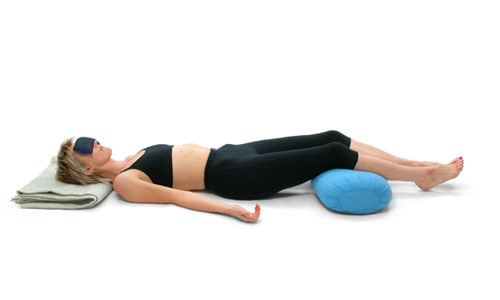Props can be very useful for some people, and if used correctly they can have many positive effects on not just a musculoskeletal level (muscles, joints and bones), but also on a physiological (energetic) level. Unfortunately, its easy to get it wrong when using props in your practice and thus they can end up being neither safe nor effective.
There are many different uses for all the props and Mr Iyengar was a brilliant pioneer in the use of props for all kinds of yoga therapy, for students with physical limitations and for their use in what is today called Yin style yoga.
Some examples of how props can be used are as follows:
Belts, can be useful if someone is very stiff in the hamstrings, or has a hamstring injury, or has a back problem that doesn’t allow them to bend forward at all. The belt allows students to reach a little bit further, whilst keeping the legs straight. If a person’s hamstrings are so tight that bending forward with the knees bent is very uncomfortable and counterproductive then it is a great idea to use a bolster.
Bolsters can be useful for sitting on when the hips are very tight and sitting in a cross leg position means that its nearly impossible for the spine to be in its natural position or for giving the head something to rest on in forward bends when there is not sufficient flexibility for the head to rest on the knee.
Blocks can be placed under specific parts of the back to manipulate and mobilise stiff spinal segments, or if a student can’t reach the ground in standing poses such as Trikonasana it can be placed under the hand.
Blankets can be used for postures such as the ‘shoulder-stand’ (Sarvangasana) to decrease the amount of neck flexion. If they are used appropriately, blankets can provide some assistance into the posture and relieve stress on the neck and back. Blankets can also be used like bolsters for sitting on in floor postures if the hips are tight.
Many of the modifications to postures with props, listed above can be done without props. For example:
- Can’t reach the floor in Trikonasana: bend the knee instead of using a block
- Can’t reach the floor in Parsvakonasa: put the elbow/forearm onto the bent knee, instead of using a block
- Can’t reach the feet in floor forward bends: bend the knees rather than using a belt.
- Too much pressure on the neck in shoulderstand: don’t come up so high onto the neck instead of using blankets – start in half shoulderstand.
Often people who are left to their own devices will use props inappropriately. It’s common to see blankets misused as a prop in ‘shoulder-stand’. Commonly students place the blanket under the wrong segment of the neck, and also use too many blankets.
If a prop such as a block is misused, or positioned badly – because it is either too low or high on the spinal column – it can overstretch a weak or loose spinal segment and can cause pain and/or damage.

Although in many instances props can be useful, they are also usually putting people into passive postures. The main problem with passive postures is that they tend to inhibit blood flow as opposed to active postures, and often result in overstretch tendons and ligaments.
Props are not generally a ‘one size fits all’-solution, and it is usually only an experienced therapist that can give a prop to a student and teach them how to use it safely and according to their individual needs.
Ideally one can practice yoga anywhere, anytime, which is why at we developed our Yoga Synergy method that enables practitioners to learn how to modify their postures so that they are appropriate to themselves in each moment and don’t require a lot of equipment to do a practice – just a mat and yourself, or even with no mat!
By learning both simple and complex variations of postures, all students know how to modify. Some will stay in the simple variation with knees bent and not coming to far into postures –one should really only go into a posture as far as the body can naturally take itself, without pulling or pushing, without using a mountain of props to get you there. Having said this, props can also be of tremendous benefit if used appropriately and safely.
Share this Post



